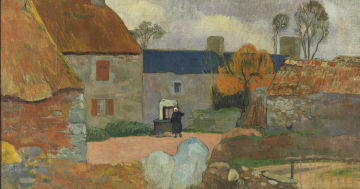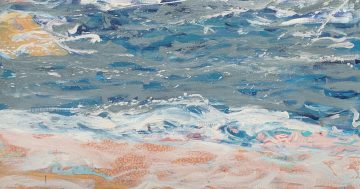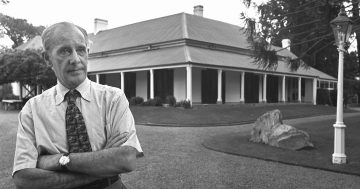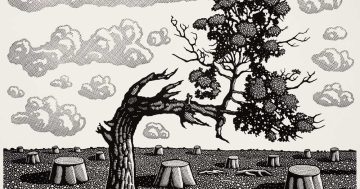
Blue Poles by Jackson Pollock, 1952. Oil, enamel, aluminium paint and glass on canvas. Photo: National Gallery of Australia.
When a government buys an abstract painting, which to the untrained eye looks to be little more than layer upon layer of paint splattered on a canvas, it would be wise to have a strategy in hand. That’s exactly what Prime Minister Gough Whitlam had, almost 48 years ago to the day.
The strategy also helped when Australians were told the government paid $1.3 million for the work, the most ever paid for an American work of art.
The painting was Jackson Pollock’s near five-metre wide work Blue Poles and today its estimated value is about $350 million.
To mark the April 1974 anniversary of the day Blue Poles was unveiled to the Australian public at the Art Gallery of NSW – because its future home, the National Gallery of Australia (NGA), wasn’t to open until 1982 – Region Media spoke to Dr Lucina Ward, Curator of International Art at the NGA.
Although almost 50 years have passed since that first installation, Blue Poles continues to ignite passion on both sides of the canvas.
At the time, the Acting Director of what was then the Australian National Gallery, James Mollison, could only approve acquisitions up to $1 million, so it was left to Gough Whitlam to approve the purchase from New York collector Ben Heller.
“Buy it and disclose the price,” Whitlam scrawled in his response to Mr Mollison’s request in 1973.
“This is not something a gallery would necessarily have done,” Dr Ward said. “But this was the strategy Whitlam used. He thought it better to be pro-active, to allow the public to see what he’d done.”
Because the painting didn’t have a permanent home at the time, the government sent it on a nationwide tour, encouraging people to see it close-up and to voice their opinions about it. And voice they did.

A 1974 poster promoting Blue Poles on display at Brisbane City Hall. Photo: National Gallery of Australia.
“It was the right strategy for this period in Australia’s history, it was not the same country it had been – it was a time of change,” Dr Ward said.
Enter Blue Poles, a vast abstract work that could be seen as a “mess” of paint drips, splatters and flicks, so of course controversy was going to reign. Headlines like “Drunk did it” also helped fuel the argument.
“People said things like Joe Average could have painted it and, in theory, they probably could. But it was all about technique,” Dr Ward said.
“Pollock was the inventor of this technique. He had extraordinary control over what he wanted the paint to do. He also didn’t work in the traditional way … he didn’t use an easel, he lay the canvas flat on the floor.
“He wasn’t a particularly tall man, but he had long reach so he could make the canvas work for him, reaching across it to work. He needed to be above the surface of the work in order to achieve the drip technique.”
Dr Ward said Pollock’s technique was also, critically, about timing. Blue Poles, she said, could have turned into a “mucky brown mess” had he not allowed time for various layers of paint to set and look the way he wanted them to look.
“Interestingly, you can tell what stage that timing was at when you hang it on the wall because of the gravity element to it.”
Dr Ward said although Blue Poles was the painting for Jackson Pollock, it took its toll on the American artist.
“He had a hard time dealing with all the publicity about it,” Dr Ward said. “It was like a celebrity is today, very much under scrutiny. He also became quite depressed for a time and, when he was depressed, he couldn’t work.”
Today, Dr Ward said Blue Poles still “has it” for her.
“When I stop and look at it, I still see a remarkable piece of art. I also love to watch visitors look at it and share that joy.”
The work has been undergoing a conservation inspection and has been moved down to the lower ground floor of the Canberra gallery to a more intimate space for the experts to work. Dr Ward said interest in Blue Poles remained strong with gallery visitors asking the conservators about the work they were doing as well as the work itself.
“It’s a wonderful way to keep the story alive,” she said. “The conservators are now on the final part of the treatment before Blue Poles is moved back upstairs – to the gallery near the entrance where it was actually first hung all those years ago”.
Original Article published by Sally Hopman on Riotact.










